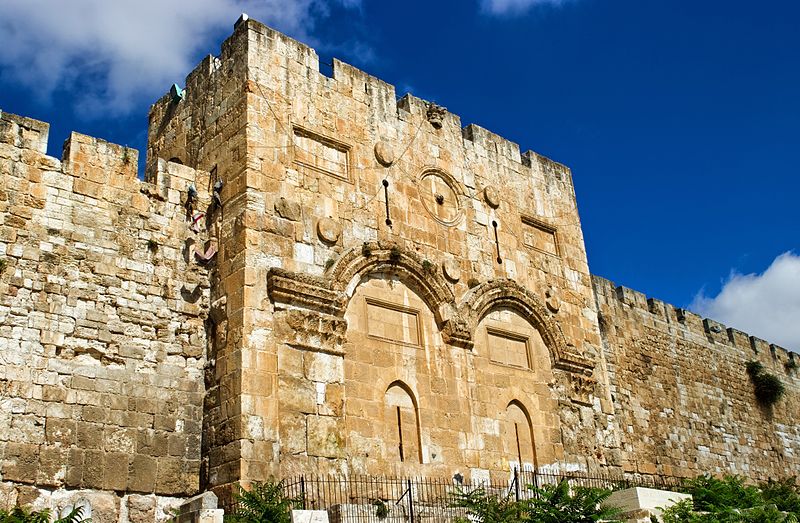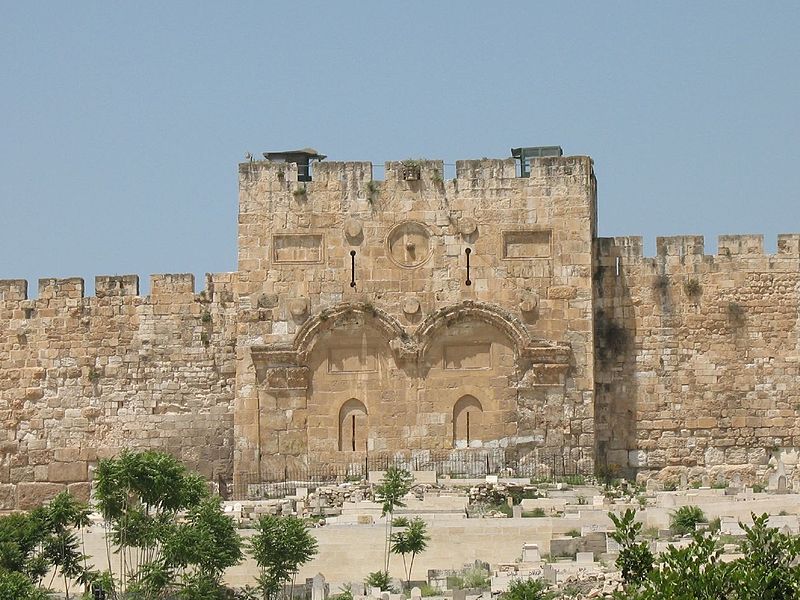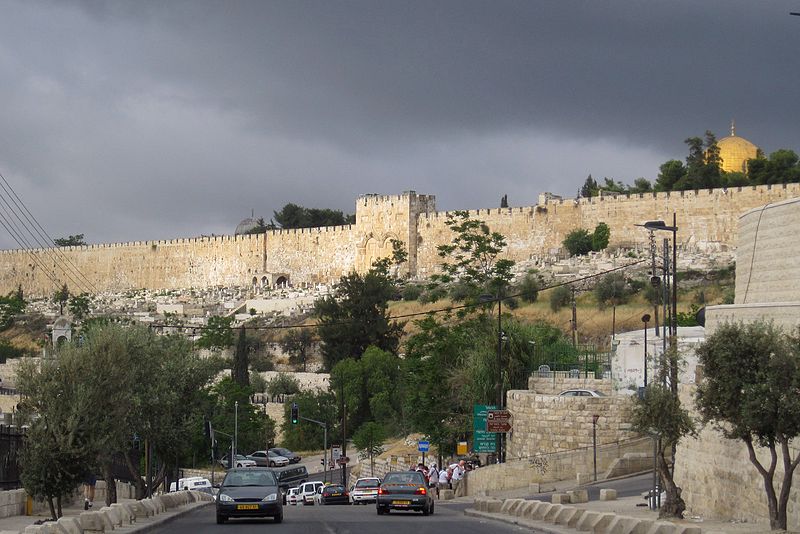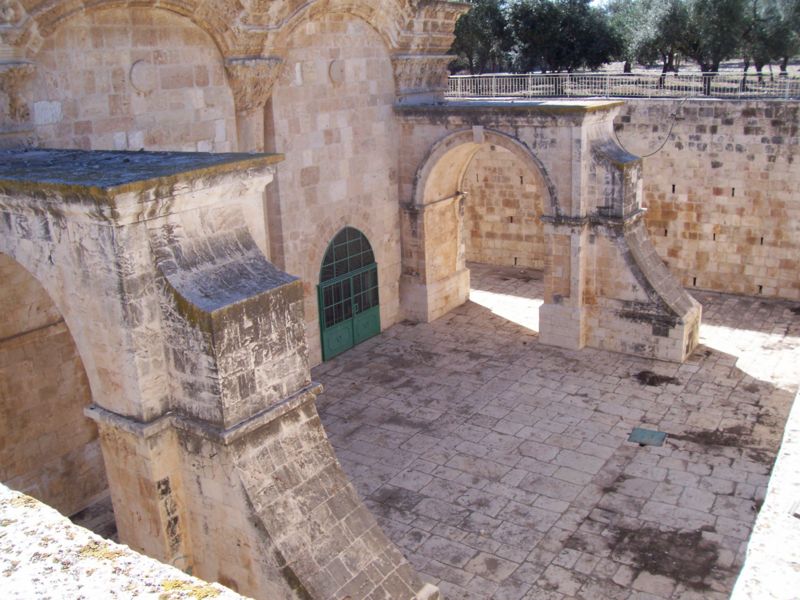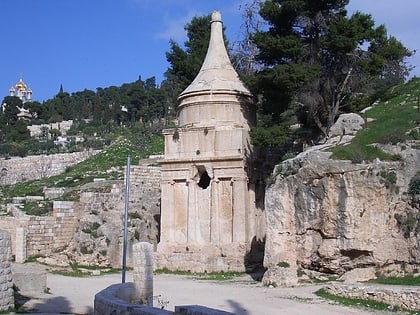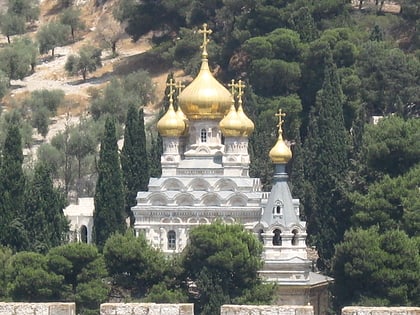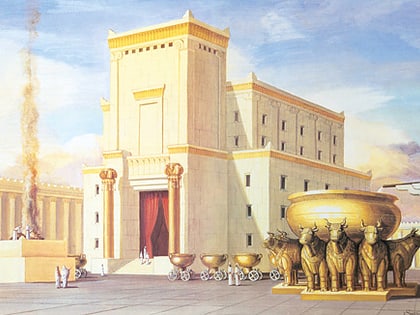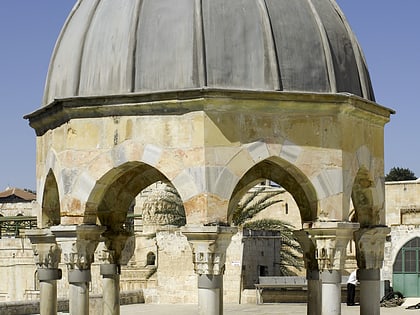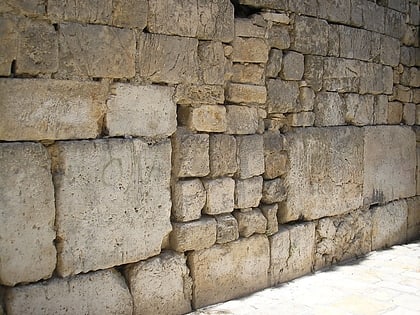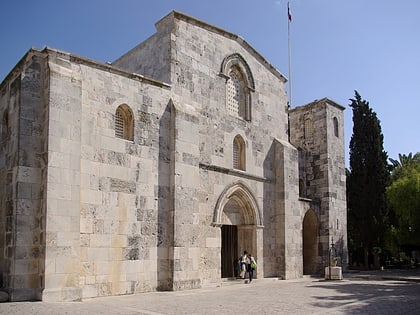Golden Gate, Jerusalem
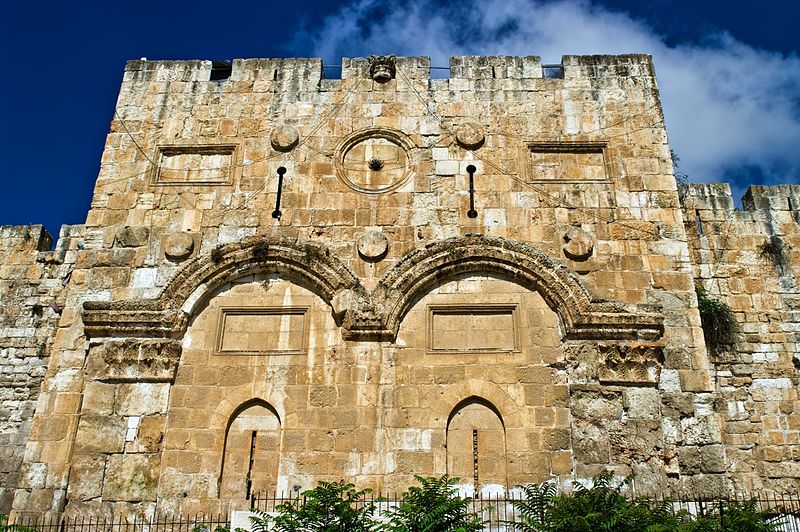
Facts and practical information
The Golden Gate, known in Hebrew as Sha'ar Harachamim (Gate of Mercy), is a storied city gate that stands as a testament to the ancient and religious history of Jerusalem, Israel. This eastern gate, situated in the historic walls surrounding the Old City, is the oldest of all the gates to the city and holds a special place in the spiritual heart of the region.
Dating back to at least the 6th or 7th century, the Golden Gate is believed by various traditions to be the place through which the Messiah will enter Jerusalem. Its significance is rooted in Jewish, Christian, and Islamic eschatology, making it a focal point for pilgrims and scholars alike. The gate's architecture features two blocked-up arches, which have remained sealed for centuries.
The Golden Gate has undergone various periods of construction and reconstruction throughout its long history, reflecting the turbulent past of the city it guards. It was last sealed by the Ottoman Sultan Suleiman the Magnificent in the 16th century, a decision shrouded in mystery and legend. Some say it was to prevent the Messiah's entrance, while others believe it was a strategic move to fortify the city's defenses.
Despite its closure, the Golden Gate remains an iconic structure, often featured in the backdrop of prayers and ceremonies held at the adjacent Western Wall, and it continues to draw visitors from around the world. Its enduring presence is a symbol of the city's ancient roots and the convergence of faiths that characterizes Jerusalem's unique cultural landscape.
Golden Gate – popular in the area (distance from the attraction)
Nearby attractions include: Temple Mount, Dome of the Rock, Church of All Nations, Tomb of the Virgin Mary.
Frequently Asked Questions (FAQ)
Which popular attractions are close to Golden Gate?
How to get to Golden Gate by public transport?
Bus
- To go to jordan (12 min walk)
- HaNevi'im Terminal • Lines: 231 (14 min walk)


